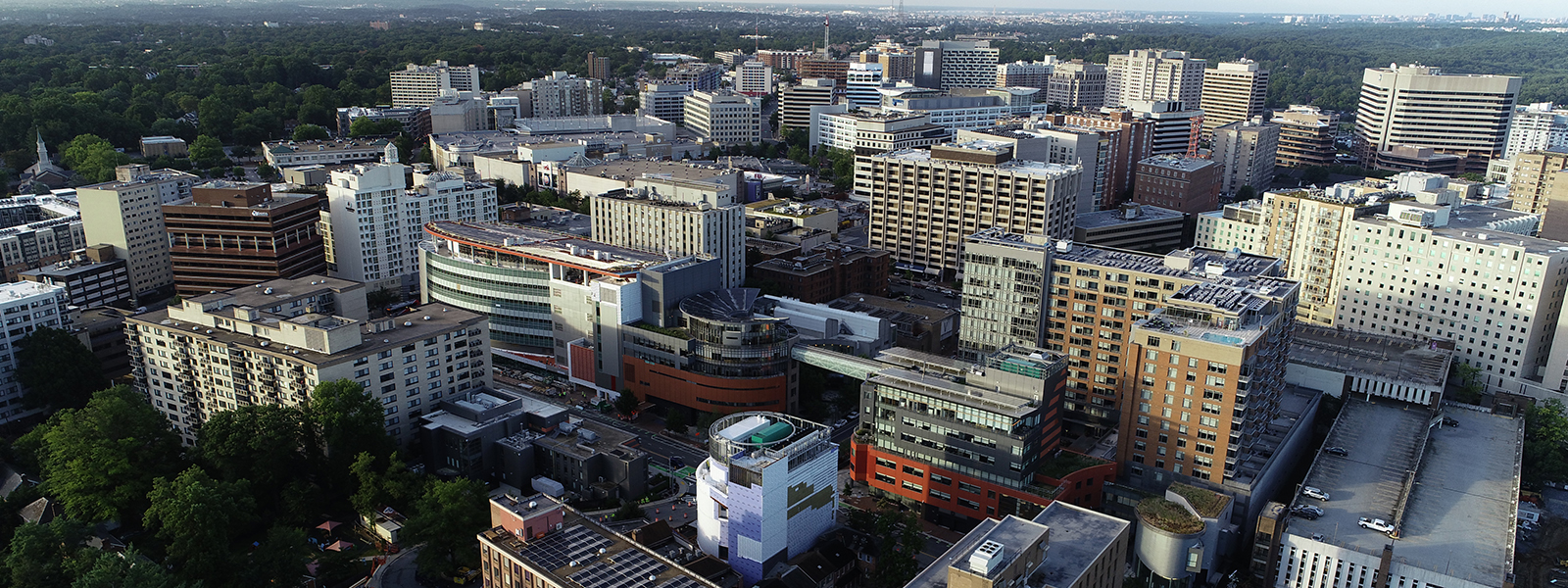
Montgomery Planning provided a brief history of Downtown Silver Spring in the recent Public Hearing Draft of Silver Spring Downtown and Adjacent Communities Plan. It can be seen below:
Indigenous peoples have lived in Montgomery County and the surrounding region for over 10,000 years. The Piscataway and Nacotchtank appear to have used the river valleys mostly for occupation and relied on the adjacent uplands for temporary camps associated with hunting and obtaining materials such as workable stone, until European colonization.
In the 1800s, Silver Spring consisted of a crossroads community and plantations, including that of Francis Preston Blair, built upon enslaved Black labor force. The opening of the Metropolitan branch of the B&O Railroad (1873) and the Washington, Woodside, and Forest Glen Railway & Power Company (1897)allowed for more housing and commercial opportunities in the area, limited primarily to whites. At the start of the twentieth century, developers of residential neighborhoods in Silver Spring often included racial restrictive covenants to bar Blacks (and people of other nationalities, ethnicities, and religious backgrounds) from the housing market. De jury and de facto segregation permitted Blacks to work in the plan area, but excluded them from owning or renting property within its boundaries.
The opening of the Silver Spring Shopping Center and Silver Theatre (1938) and Hecht’s Store (1947), along with associated infrastructure improvements, transformed Silver Spring from a bedroom community a regional retail center with offices, shops, hotels, and other businesses, and a successful manufacturing and light industrial area near the train station. Segregation and discrimination in various forms continued to exclude non-white residents from many of the benefits of his growth.
During the Civil Rights movement, County residents, Black and white, fought for fair access to housing and public accommodations. Notable individuals during this period include: Mary Betters who served as President of the local branch of the NAACP, J. Charles Jones who directed the Action Coordinating Committee to End Segregation in the Suburbs (ACCESS), David Scull who led the County Council to pass the Fair Housing Ordinance, Morris Milgram who built the first integrated apartment housing in greater Silver Spring, and Roscoe Nix who challenged business owners and held the County accountable for upholding its public accommodations law.
In the 1960s and 1970s, Silver Spring’s dominance as a regional shopping center waned with the opening of suburban malls. However, the arrival of new industries (such as financial institutions), increased federal services and reliance on contractors, and the shift of federal office space away from Washington, D.C. led to the rebranding of the plan area as a regional office destination, with several federal agencies establishing office buildings downtown. This office space, along with ample county-owned parking, and accommodating zoning led to the construction of several high-rise apartment buildings in the downtown. The Silver Spring Metrorail station opened in 1978, but its location away from the historic center of downtown limited additional development in the surrounding blocks.
The closing of major and mid-sized white-owned retailers in the 1980s and 1990s created commercial vacancies that began to be filled by the establishment of a rich, ethnically diverse, local- business community that continues today. While there are many immigrant communities in the plan area, the Ethiopian community has had particular success in Silver Spring and regards this urban area as a center for Ethiopian life and culture in the region.
Since 2000, revitalization efforts envisioned by the Sector Plan have seen the redevelopment of the Downtown Silver Spring retail core, the promotion of an arts and entertainment district and the reopening of the historic Silver Theatre, and the opening of the Discovery corporate headquarters. With this, the former light industrial areas west of Georgia Avenue have been redeveloped with multi-family housing and the Paul Sarbanes Transit Center has been completed at the Silver Spring Metro station. Planning and initial construction for the Purple Line light-rail system connecting Bethesda to New Carrolton in Prince George’s County has created new opportunities.
The Montgomery County Planning Board has approved sketch plans for the 2,500,000 square foot Rose Village development, according to a report by BLDUP.com You can read the final staff report from The Montgomery Planning Board here. Rose Village will be located to the West of Pike & Rose, bordered by Montrose Parkway, Towne Road, and Executive Blvd (not in Rockville city limits).
Plans for Rose Village include seven new buildings, green space, and a pavilion built around two existing buildings. The new buildings will offer retail, office, and residential spaces. As shared by Friends of White Flint, the property is 21.5 acres of land that will be developed into 2,000 residential units plus 2.5 million square feet of other mixed-use properties.
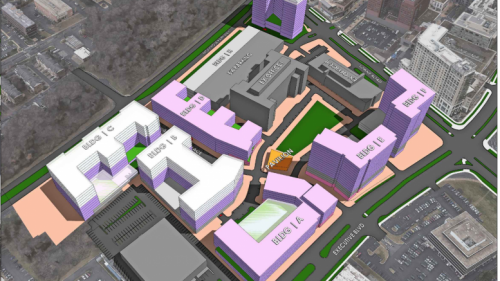
Planning Board Recommends Approval of the Great Seneca Science Corridor Minor Master Plan Amendment
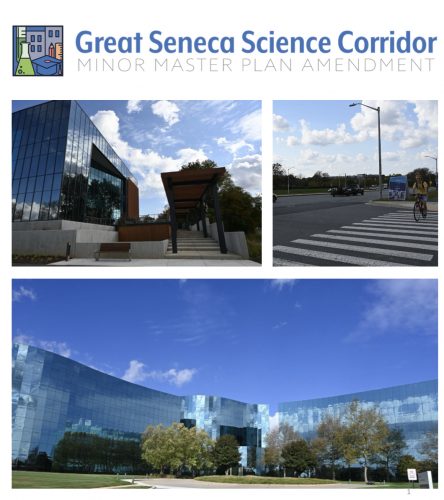
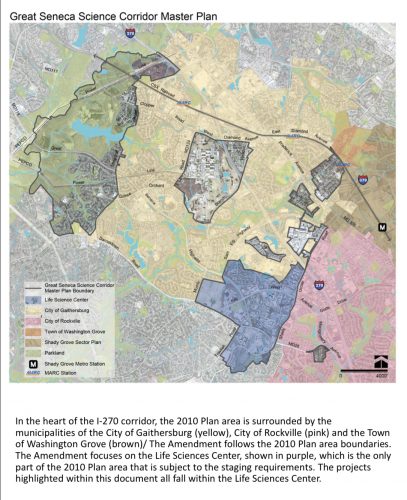
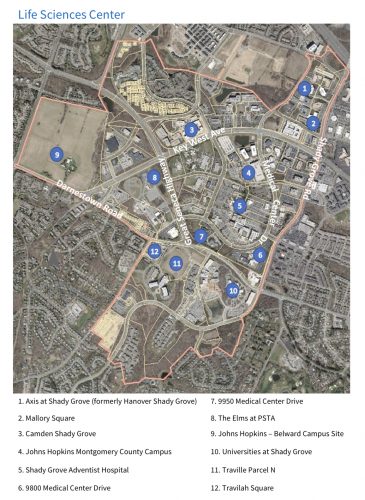
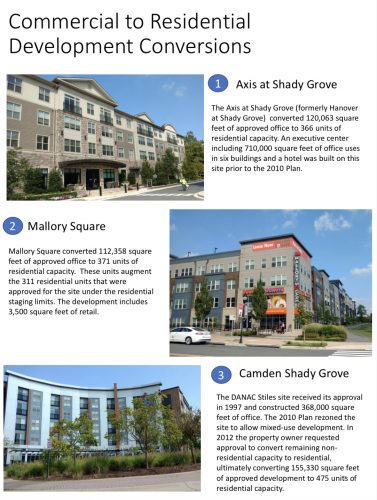
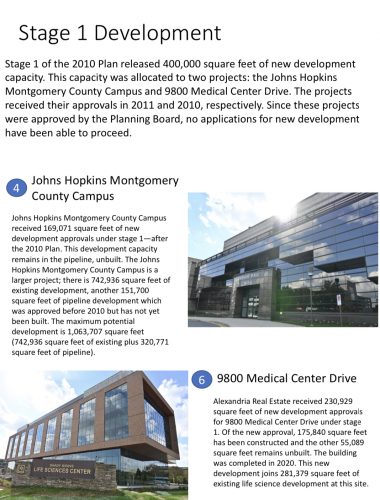
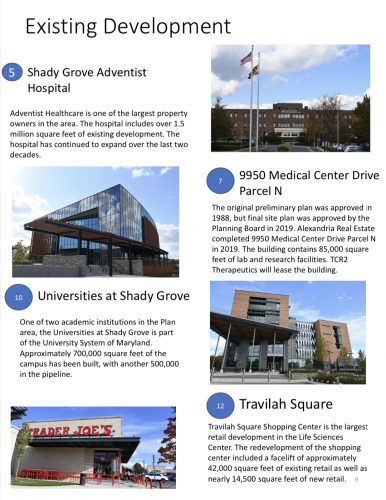
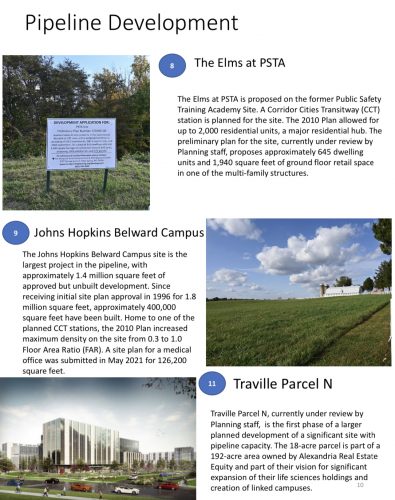
Per Montgomery County Planning Board:
The Montgomery County Planning Board has completed its review of the Great Seneca Science Corridor Minor Master Plan Amendment and recommended transmittal of the Planning Board Draft Plan to the County Executive and County Council.
The Planning Board held a Public Hearing on the Public Hearing Draft of the plan amendment on June 3. This was followed by two work sessions that examined the recommendations in the plan amendment.
The purpose of the plan amendment is to balance support for economic development and opportunity with the critical transportation connections envisioned in the 2010 Great Seneca Science Corridor Master Plan.
The plan amendment suggests changes to the 2010 Plan’s staging requirements to address the urgent need to accommodate growth in the life sciences industry, which contributes to the county’s economic health and advancements in science. The draft plan amendment recommends an adjustment to the staging requirements to allow additional non-residential development capacity in the Shady Grove Life Sciences Center. It also recommends a comprehensive amendment to the 2010 Plan to fully evaluate the plan’s vision, recommendations and staging requirements as well as integrate countywide plans and policies adopted over the last decade.
The County Executive and County Council are expected to begin reviewing the Planning Board’s Draft Plan this fall.
Background on the Great Seneca Science Corridor Minor Master Plan Amendment
The 2010 Great Seneca Science Corridor Master Plan (2010 Plan) created a vision for a dynamic live/work community that would support a globally recognized biotechnology hub in the Shady Grove Life Science Center. Ten years later, the biotechnology sector is thriving, providing needed jobs to county residents. While the life sciences industry is strong, regulations—called staging requirements—established by the 2010 Plan have impeded further growth in this leading biotech hub.
The Great Seneca Science Corridor Minor Master Plan Amendment identifies strategies to advance progress toward the 2010 Plan vision and goals. The Great Seneca Science Corridor Minor Master Plan Amendment reviews the framework that established these regulations in 2010, and assesses the growth, development and infrastructure investment that has occurred over the past decade.
This plan amendment does not amend any of the zoning recommendations from the 2010 Plan, which dictate the maximum height and area of buildings and type of allowable land uses for each property. Rather, this plan amendment recommends adjustments to the 2010 Plan’s staging requirements to address the urgent need to accommodate growth in the life sciences industry, critical to the COVID-19 pandemic response and recovery.

